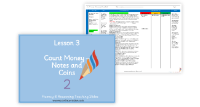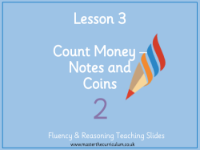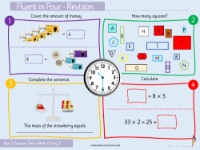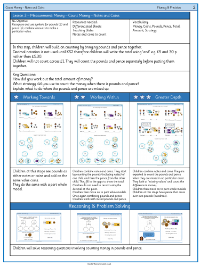Money - Count money notes and coins - Planning
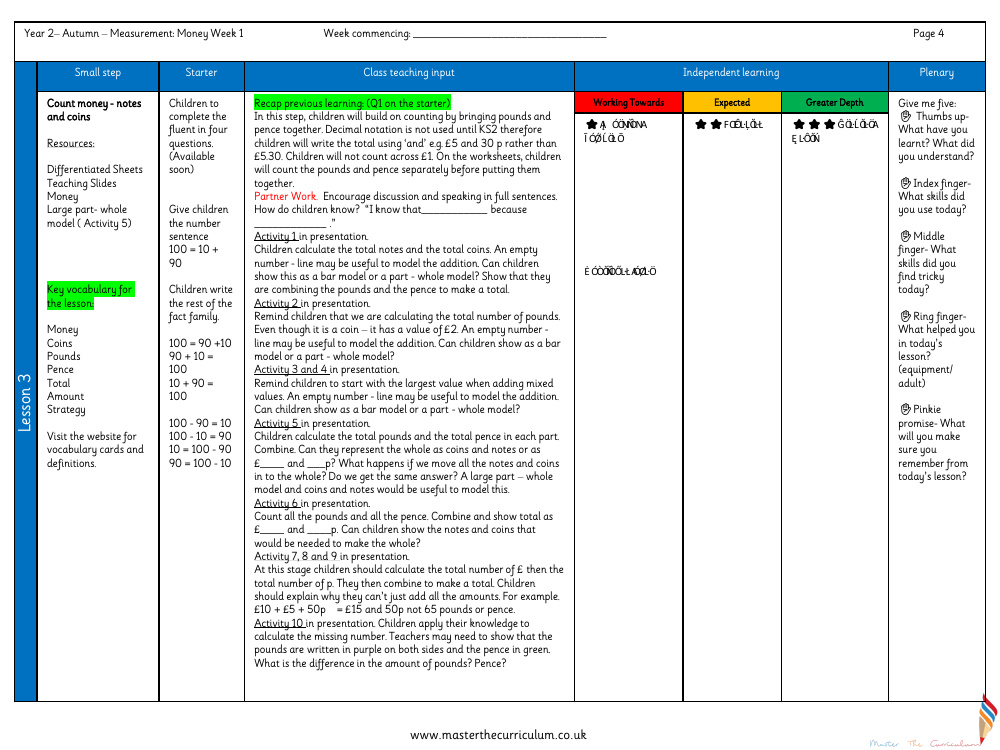
Maths Resource Description
In the Year 2 curriculum for Autumn, the focus of Week 1 in the Measurement: Money unit is on counting money, specifically notes and coins. Children are introduced to key vocabulary such as money, coins, pounds, pence, total, amount, and strategy, with resources available for further clarification. They are encouraged to complete 'fluent in four' questions to warm up their mathematical skills. The teaching input involves understanding that pounds and pence are to be counted separately and then combined without using decimal notation, as this concept is not introduced until KS2. Instead, children are taught to write totals using 'and', for example, £5 and 30p. Through various activities, students calculate the total of notes and coins, first individually and then in combination, using visual aids like number lines, bar models, or part-whole models to support their learning.
The lesson plan also includes reasoning and problem-solving activities, where children explore different methods of making amounts with notes and coins, and address common misconceptions. They are prompted to identify and correct mistakes in counting and to articulate their strategies for combining mixed pounds and pence. The plenary session encourages reflection, asking students to consider what they have learned, the skills they have used or found challenging, and the resources that have supported their learning. The lesson differentiates between levels of understanding, from working towards expected standards to achieving greater depth, guiding children through the process of adding values and understanding the relationship between notes and coins. As they progress, children are expected to handle more complex tasks, such as dealing with pence that cross over into pounds.
